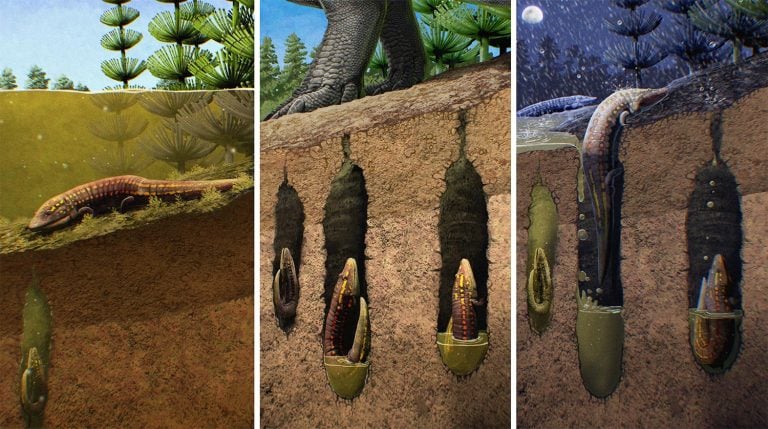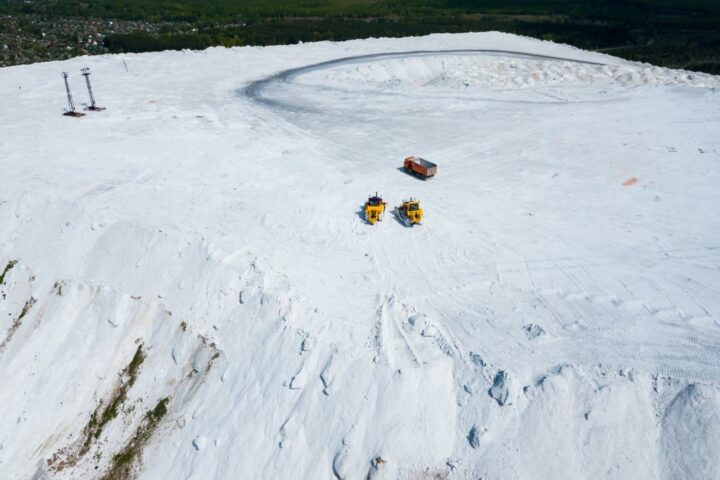Ancient amphibians in Wyoming adapted to extreme weather by burrowing, offering insights into current amphibian survival strategies amid climate change.
Extreme Seasons in Ancient Wyoming
230 million years ago, Wyoming experienced drastic seasonal changes, with torrential rains followed by extreme dryness. This posed a significant challenge to amphibians, which need moist skin to survive. However, one group of salamander-like creatures developed a remarkable adaptation.
Burrowing for Survival
Researchers discovered fossil amphibians preserved in torpedo-shaped burrows, likely used to wait out the dry season. These burrows, up to 12 inches long, were found in rock layers formed during the mega-monsoon that affected the supercontinent of Pangea.
Discovery and Research
Cal So, lead author and incoming postdoctoral scientist at the Field Museum, and Research Scientist David Lovelace of the University of Wisconsin Geology Museum, first encountered the fossil burrows in 2014. Lovelace recognized the structures as in-filled burrows made by an animal long ago.
Uncovering Fossil Secrets
High-resolution CT scans revealed tiny skeletons inside the burrows. The team gathered around 80 fossil burrows, containing skulls and bones of the ancient amphibians. Clues suggest they were about a foot long, with tiny arms and a scoop-shaped skull, possibly used for digging.
Implications for Modern Amphibians
These ancient creatures’ burrowing behavior offers insights into current amphibian survival strategies amid climate change. By studying these fossils, researchers can better understand how amphibians adapt to extreme environments.
Key Findings:
- Ancient amphibians burrowed to survive dry seasons.
- Burrows were up to 12 inches long and contained fossil skeletons.
- Amphibians likely used their scoop-shaped skulls for digging.
- Research provides insights into current amphibian survival strategies.
Learn More:
- Read the full study in Proceedings of the Royal Society B.
- Explore the Field Museum’s research on ancient amphibians.
- Discover how climate change affects modern amphibians.

















